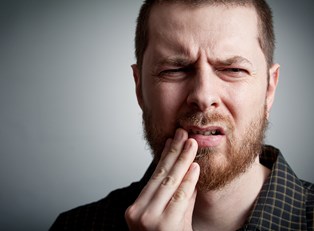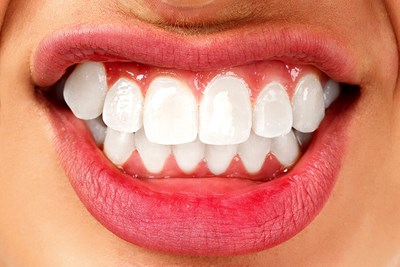Bruxism is a condition characterized by the unconscious grinding, clenching, or gritting of the teeth and jaw. While it is not considered dangerous, it can do a lot of damage to your teeth, be painful for the jaw and face, and eventually result in temporomandibular joint problems (TMJ). Luckily, there’s a lot you can do to help stop bruxism -- or at least protect your teeth from the ensuing damage. Here’s a look at treatments for bruxism.
Diurnal Bruxism
Diurnal, or awake, bruxism occurs during the day. It is still largely unconscious, and many experts consider it a sort of bad habit, used as a coping mechanism or in response to high levels of stress, strain, or other strong emotions (i.e. anger, frustration). Treating diurnal bruxism may need a different approach from sleep bruxism, a sleep-related movement disorder that occurs largely during the times when the sleeper tends to stir a little bit while sinking into deeper cycles of sleep.
Modification Therapies
Although additional means of management may be necessary for diurnal bruxism, treating the underlying compulsion may be achieved through behavior modification, stress management, or biofeedback (this is not to say these therapies are never useful in treating sleep bruxism, only that they are especially helpful for diurnal bruxism). You may be able to modify the behavior if you learn the proper way to situate your teeth and jaws from your dentist, allowing you to pay attention to the way they are currently placed and adjust accordingly to minimize grinding or clenching.
Additionally, learning to manage stress and other strong emotions can help reduce the sensation of needing to grind the teeth in response. Stress management can be achieved through therapeutic counseling that teaches you how to better manage stress and how to relax more efficiently, relieving your body’s physical response to emotional stress. Biofeedback involves monitoring automatic bodily functions or responses, and then utilizing that information to retrain the body.
Dental Approaches
In some cases, it is necessary to approach bruxism treatment from a dental and anatomical view, rather than a psychological view. In very severe cases, bruxism can cause significant damage to the teeth, and utilizing products that minimize that damage can help protect affected structures while you learn to manage the grinding and clenching. Night guards, or mouth guards, are made specifically to protect the teeth. They are made like a retainer, but with the added covering for the teeth (such as might be used in sports), out of a cushiony material. A night guard is worn on either the top or bottom row of teeth, thus providing protection. These are available over the counter at any pharmacy, and can be customized to your mouth by boiling the night guard and then allowing it to form to your teeth. An occlusal splint is a similar product, but designed by your dentist specifically for your mouth.
For more serious cases of bruxism caused by issues like malocclusion (misalignment of the teeth/jaws), dental corrections can be a very successful means of treatment. This might involve reshaping the teeth or moving the teeth or jaws using braces and similar products. If you have been dealing with bruxism, talk to your doctor or dentist about the best course of treatment for you.



